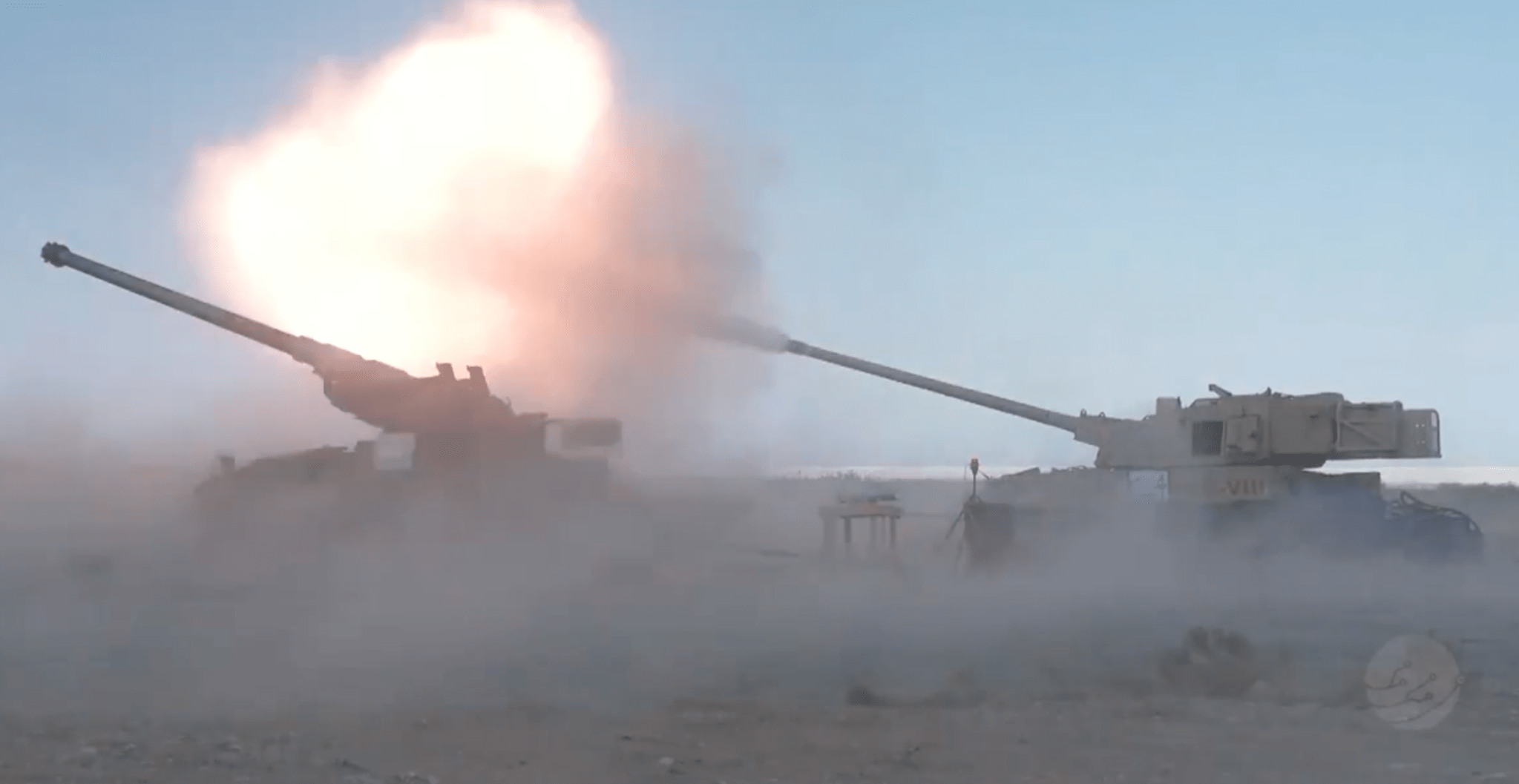

The Defense Department has released footage of a recent test of the U.S. military’s vaunted hypervelocity projectile.
The Air Force recently used the HVP — a low-drag, guided projectile capable of reaching speeds up to Mach 5 — fired from an Army M109 Paladin-based 155mm howitzer and a Navy deck gun to down a mock cruise missile during a demonstration at White Sands Missile Range in New Mexico.
A BQM-167 target drone “served as surrogates for Russian cruise missiles” during a demonstration of the service’s Advanced Battle Management System, as Breaking Defense reported.
“Tanks shooting down cruise missiles is awesome,” Dr. Will Roper, assistant secretary of the Air Force for acquisition, technology, and logistics, told reporters. “Video game, sci-fi awesome.”
And he’s not wrong. Here’s a GIF of the magical moment for your viewing pleasure:
Originally designed for the Navy’s electromagnetic railgun back in 2013, the Pentagon’s secretive Strategic Capabilities Office has been working on employing the HVP through conventional powder guns in what’s called a hypervelocity gun weapon system (HGWS) to down incoming missiles.
In 2018, the Navy reportedly test-fired 20 next-generation HVP shells from the USS Dewey’s Mk 45 five-inch deck guns during the service’s annual Rim of the Pacific (RIMPAC) maritime exercise.
When fired from conventional five-inch powder guns, the HVP “reportedly achieves a speed of roughly Mach 3, which is roughly half the speed it achieves when fired from the [electromagnetic railgun], but more than twice the speed of a conventional 5-inch shell fired from a 5-inch gun,” according to a recent Congressional Research Service report.
As Task & Purpose previously reported, the DoD’s existing land- and sea-based interceptor vehicles perform fine against ballistic missiles but simply don’t offer an optimal chance of success against incoming cruise missiles or hypersonic weapons which have become a major focus for the China and Russian militaries.
But the advantage of the HVP over conventional missile defenses is also a matter of cost: While the standard Evolved Seasparrow Missile or Rolling Airframe Missile cost several million dollars apiece, HVP program manager Vince Sabio had previously pegged the cost of an HVP at around $85,000 apiece.
The HVP “is being designed to engage multiple threats,” as Sabio said back in January 2018 “Any place that you can take a 155 [howitzer], any place that you can take your Navy DDG, you have got an inexpensive, flexible air and missile defense capability.”
This is great, but you know what’s cooler than an inexpensive, flexible air and missile defense capability? How about an inexpensive, flexible air and missile defense capability set to Slayer’s ‘Raining Blood’?
